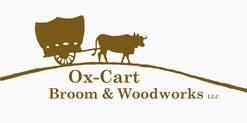 Cans of food lining the root cellar shelves Cans of food lining the root cellar shelves There are few things in life that put crafting for Traditional Necessities, or life in general, on hold. One of the most predictable is the arrival of canning season. As the summer days grow shorter and mornings grow cooler, the counter fills with a bountiful harvest from the gardens and orchards that must be put up before winter. Canning season usually starts for me in mid-July when the apricots, our first fruit of the season here, ripen. Unfortunately the late spring freeze nipped the blossoms of the apricots, plums and peaches this year, so canning season started a little late. But my kitchen is now overflowing with green beans, zucchini, kale, peaches (from a nearby orchard that escaped the late freeze), pears, apples, pumpkins, and tomatoes, with so much more fresh produce yet to come. So daily I wake up to search for new recipes for canning—this year peach salsa and spiced peaches are being added to the list—and I start washing, chopping, packing jars and processing food to line the root cellar shelves for winter. It is such a wonderful feeling to go down to the cool, dark root cellar during the coldest days of winter and pick out onions, garlic, potatoes, green beans, tomatoes, and winter squash to add to a fulfilling stew that bubbles on the stove and lends a savory scent to the air when I walk into the house with an armload of firewood.
1 Comment
 Our assortment of yarns died from North American mushrooms. Our assortment of yarns died from North American mushrooms. I recently had the remarkable experience of attending the Telluride Mushroom Festival. I’ve always been fascinated by the world of plants. Fungi, although it has been something that I have wanted to learn about for many years, has been a world in which I have not yet been immersed. Sure, I’ve gone out foraging with friends and I’ll eat what they, and the identification books, tell me is safe, but beyond that I really know nothing. You might be wondering where this is going, being that Traditional Necessities is a business focused on craft. Although the festival had amazing presentations about bioremediation and medicinal uses of mushrooms, mushroom cook-offs, mushroom beer, and foraging field trips, I also had the opportunity to participate in a wonderful workshop about dying wool using mushrooms. I learned that this is a centuries old tradition that is particularly well practiced in Scandinavia—another opportunity in my life for me to explore my heritage. I signed up for the class not really knowing what it would be about. The website was sorely lacking in information, but I figured that brown is one of my favorite colors, so why not go learn how to dye my own wool for knitting projects? Little did I know that out of the nineteen different dye pots with which we would experiment, only ONE would actually turn out brown. I walked out of the class with a swatch sheet filled with yarns of bright coral, goldenrod yellow, sage green, ocean blue, lilac purple and every shade in between! Throughout the workshop we learned about the preparation of wool and mushrooms, which mushroom families tend to produce interesting pigments, and the methods for extracting those pigments. We experimented with mushrooms ranging from the commonly eaten boletes and lobster mushrooms to the deadly poisonous tender nesting polypore. Now I’m prepared to head out into the mountains, armed with baskets and identification books, to forage for a whole new world of color to add to my faire-isle knitting! |
Marybeth GarmoeCraftsperson Archives
August 2019
Categories |




 RSS Feed
RSS Feed

